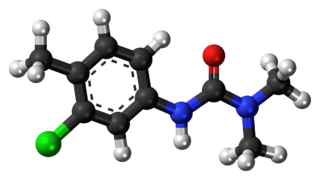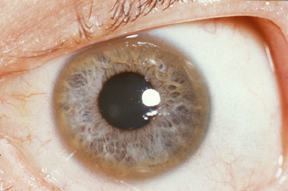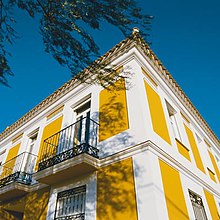A biocide is defined in the European legislation as a chemical substance or microorganism intended to destroy, deter, render harmless, or exert a controlling effect on any harmful organism. The US Environmental Protection Agency (EPA) uses a slightly different definition for biocides as "a diverse group of poisonous substances including preservatives, insecticides, disinfectants, and pesticides used for the control of organisms that are harmful to human or animal health or that cause damage to natural or manufactured products". When compared, the two definitions roughly imply the same, although the US EPA definition includes plant protection products and some veterinary medicines.

Glyphosate is a broad-spectrum systemic herbicide and crop desiccant. It is an organophosphorus compound, specifically a phosphonate, which acts by inhibiting the plant enzyme 5-enolpyruvylshikimate-3-phosphate synthase (EPSP). It is used to kill weeds, especially annual broadleaf weeds and grasses that compete with crops. Its herbicidal effectiveness was discovered by Monsanto chemist John E. Franz in 1970. Monsanto brought it to market for agricultural use in 1974 under the trade name Roundup. Monsanto's last commercially relevant United States patent expired in 2000.

Copper(II) sulfate, also known as copper sulphate, is an inorganic compound with the chemical formula CuSO4. It forms hydrates CuSO4·nH2O, where n can range from 1 to 7. The pentahydrate (n = 5), a bright blue crystal, is the most commonly encountered hydrate of copper(II) sulfate, while its anhydrous form is white. Older names for the pentahydrate include blue vitriol, bluestone, vitriol of copper, and Roman vitriol. It exothermically dissolves in water to give the aquo complex [Cu(H2O)6]2+, which has octahedral molecular geometry. The structure of the solid pentahydrate reveals a polymeric structure wherein copper is again octahedral but bound to four water ligands. The Cu(II)(H2O)4 centers are interconnected by sulfate anions to form chains.

An agrochemical or agrichemical, a contraction of agricultural chemical, is a chemical product used in industrial agriculture. Agrichemical refers to biocides and synthetic fertilizers. It may also include hormones and other chemical growth agents.
A biopesticide is a biological substance or organism that damages, kills, or repels organisms seen as pests. Biological pest management intervention involves predatory, parasitic, or chemical relationships.

The oligodynamic effect is a biocidal effect of metals, especially heavy metals, that occurs even in low concentrations. This effect is attributed to the antibacterial behavior of metal ions, which are absorbed by bacteria upon contact and damage their cell membranes.

Chlortoluron or chlorotoluron are the common names for an organic compound of the phenylurea class of herbicides used to control broadleaf and annual grass weeds in cereal crops.

Glufosinate is a naturally occurring broad-spectrum herbicide produced by several species of Streptomyces soil bacteria. Glufosinate is a non-selective, contact herbicide, with some systemic action. Plants may also metabolize bialaphos and phosalacine, other naturally occurring herbicides, directly into glufosinate. The compound irreversibly inhibits glutamine synthetase, an enzyme necessary for the production of glutamine and for ammonia detoxification, giving it antibacterial, antifungal and herbicidal properties. Application of glufosinate to plants leads to reduced glutamine and elevated ammonia levels in tissues, halting photosynthesis and resulting in plant death.

DCMU is an algicide and herbicide of the arylurea class that inhibits photosynthesis. It was introduced by Bayer in 1954 under the trade name of Diuron.

Sulfentrazone is the ISO common name for an organic compound used as a broad-spectrum herbicide. It acts by inhibiting the enzyme protoporphyrinogen oxidase. It was first marketed in the US in 1997 by FMC Corporation with the brand name Authority.

Copper toxicity is a type of metal poisoning caused by an excess of copper in the body. Copperiedus could occur from consuming excess copper salts, but most commonly it is the result of the genetic condition Wilson's disease and Menke's disease, which are associated with mismanaged transport and storage of copper ions. Copper is essential to human health as it is a component of many proteins. But hypercupremia can lead to copper toxicity if it persists and rises high enough.

Enilconazole is a fungicide widely used in agriculture, particularly in the growing of citrus fruits. Trade names include Freshgard, Fungaflor, and Nuzone.
Copper pesticides are copper compounds used as bactericides, algaecides, or fungicides. They can kill bacteria, oomycetes and algae, and prevent fungal spores from germinating. Common forms of fixed copper fungicides include copper sulfate, copper sulfate pentahydrate, copper hydroxide, copper oxychloride sulfate, cuprous oxide, and copper octanoate.
This is an index of articles relating to pesticides.

Monolinuron is a pesticide, more specifically a selective systemic herbicide and an algaecide. As an herbicide, it is used to control broad-leaved weeds and annual grasses in vegetable crops such as leeks, potatoes, and dwarf French beans. Monolinuron affects the photosynthesis in weeds. Following uptake of monolinuron through roots and leaves of weeds, monolinuron causes early symptoms of yellowing and die-back of the leaves, eventually resulting in weed death. In fishkeeping, it is used to control blanket weed and hair algae.

Tebuthiuron is a nonselective broad spectrum herbicide of the urea class. It is used in a number of herbicides manufactured by Dow AgroSciences, and is sold under several trade names, depending on the formulation. It is used to control weeds, woody and herbaceous plants, and sugar cane. It is absorbed by the roots and transported to the leaves, where it inhibits photosynthesis.

Fluxapyroxad is a broad-spectrum pyrazole-carboxamide fungicide used on a large variety of commercial crops. It stunts fungus growth by inhibiting the succinate dehydrogenase (SQR) enzyme. Application of fluxapyroxad helps prevent many wilts and other fungal infections from taking hold. As with other systemic pesticides that have a long chemical half-life, there are concerns about keeping fluxapyroxad out of the groundwater, especially when combined with pyraclostrobin. There is also concern that some fungi may develop resistance to fluxapyroxad.

Cyproconazole is an agricultural fungicide of the class of azoles, used on cereal crops, coffee, sugar beet, fruit trees and grapes, on sod farms and golf courses and on wood as a preservative. It was introduced to the market by then Sandoz in 1994.

Cyanazine is a herbicide that belongs to the group of triazines. Cyanazine inhibits photosynthesis and is therefore used as a herbicide.
















